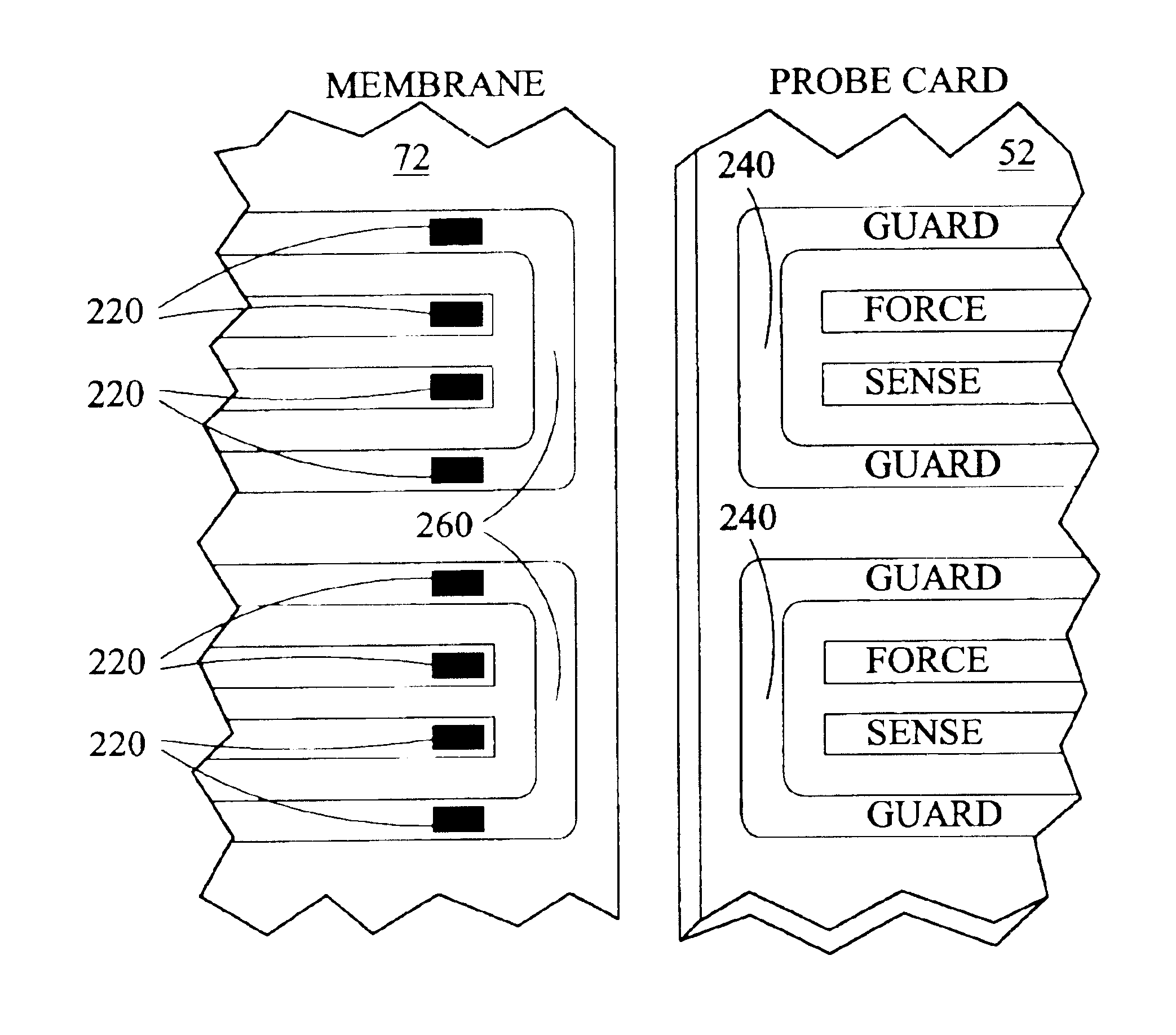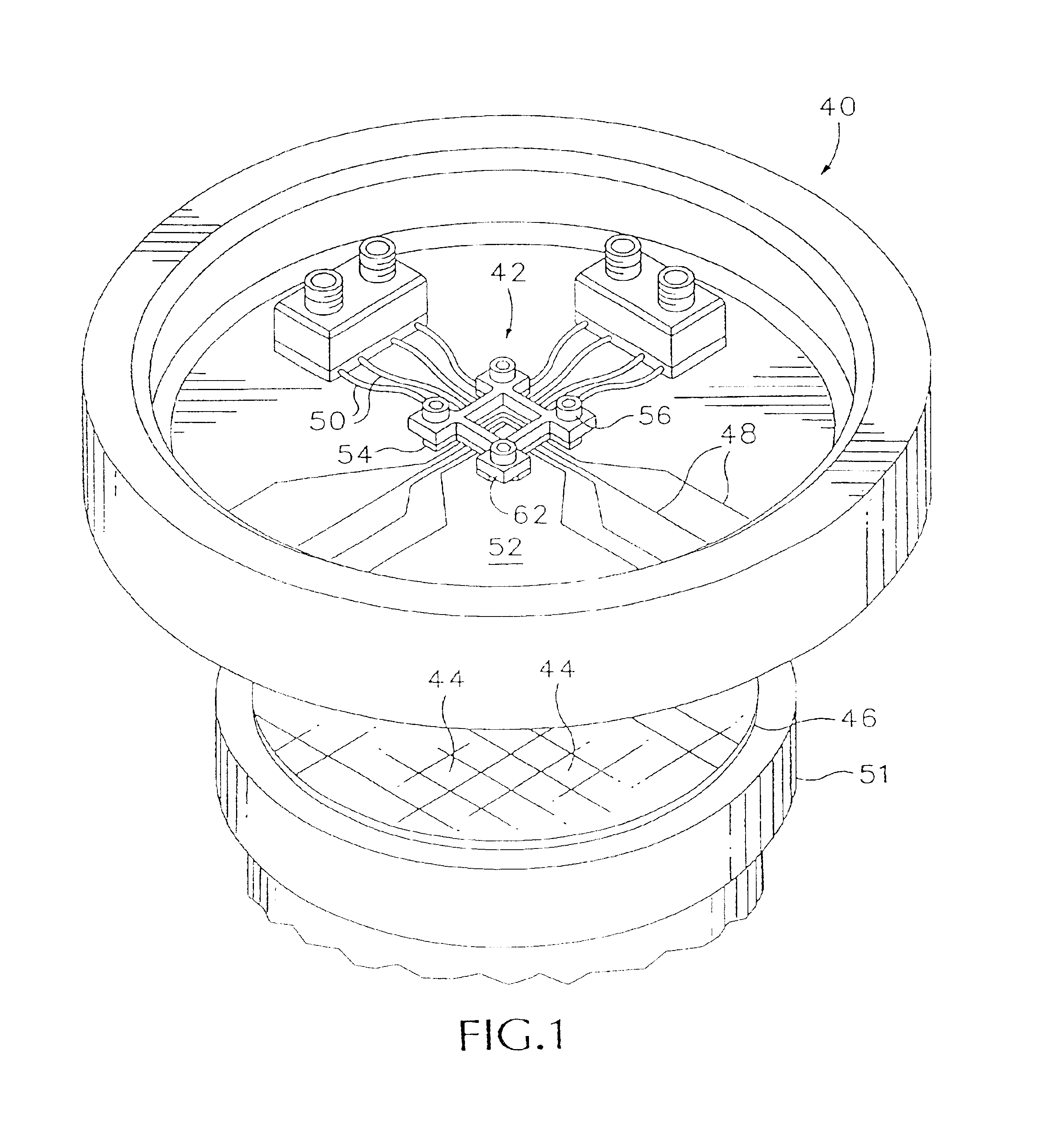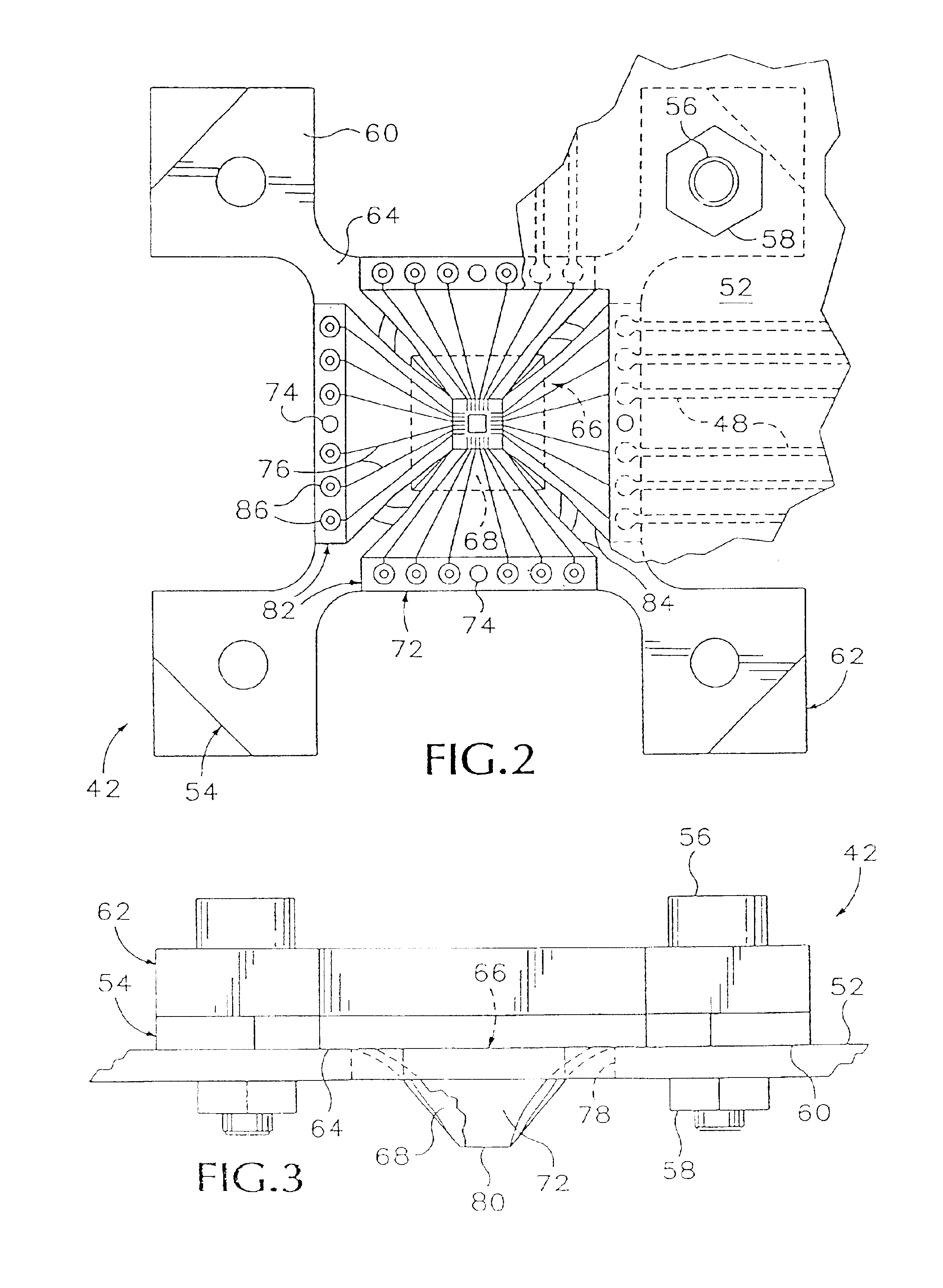Membrane probing system
a probe and membrane technology, applied in the field of probe assemblies, can solve the problems of excessive pad damage, large signal distortion, and more forward tips of the tip to bear down too heavily on their respective pads
- Summary
- Abstract
- Description
- Claims
- Application Information
AI Technical Summary
Benefits of technology
Problems solved by technology
Method used
Image
Examples
Embodiment Construction
With particular regard to probe cards that are specially adapted for use in measuring ultra-low currents, probe card designers have been concerned with developing techniques for controlling(e.g., minimizing) leakage currents. Unwanted currents that flow into a particular cable (or conductor)from surrounding cables (or conductors) may distort the current measured in that particular cable (or conductor). For a given potential difference between two spaced apart conductors, the amount of leakage current that will flow between them will vary depending upon the volume resistivity of the insulating material that separates the conductors. In other words, if a relatively lower-resistance insulator is used, this will result in a relatively higher leakage current. Thus, a designer of low-current probe cards will normally avoid the use of rubber-insulated single-core wires on a glass-epoxy board since rubber and glass-epoxy materials are known to be relatively low-resistance insulators through...
PUM
 Login to View More
Login to View More Abstract
Description
Claims
Application Information
 Login to View More
Login to View More - R&D
- Intellectual Property
- Life Sciences
- Materials
- Tech Scout
- Unparalleled Data Quality
- Higher Quality Content
- 60% Fewer Hallucinations
Browse by: Latest US Patents, China's latest patents, Technical Efficacy Thesaurus, Application Domain, Technology Topic, Popular Technical Reports.
© 2025 PatSnap. All rights reserved.Legal|Privacy policy|Modern Slavery Act Transparency Statement|Sitemap|About US| Contact US: help@patsnap.com



